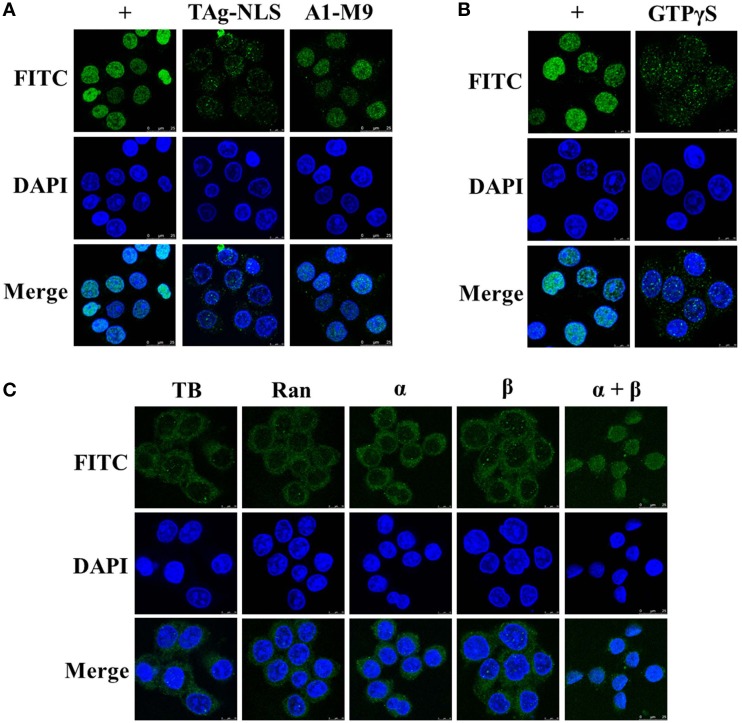Figure 6.
UL42 is transported into the nucleus via the importin α/β pathway. (A) UL42 competes with the SV40 TAg–NLS, but not with the hnRNP A1-M9, for nuclear import. Nuclear import was performed in the presence of RRL, an ATP-regenerating system, and purified Flag–UL42 (+). TAg–NLS, 1 mM SV40 TAg–NLS peptide was added to the import mixture. A1-M9, 1 mM hnRNP A1-M9 peptide was added to the import mixture. The merged FITC and DAPI signals are shown. Images are representative of three independent nuclear import assays. (B) GTP dependence of UL42 nuclear uptake. Nuclear import was performed in the presence of RRL, an ATP-regenerating system, and purified Flag–UL42 (+). GTPγS, GTP was omitted and 1 mM GTPγS was added. The merged FITC and DAPI signals are shown. Images are representative of three independent nuclear import assays. (C) UL42 gains entry to the nucleus in the presence of importins α and β. Reconstitution assays were performed in transport buffer (TB), with a Ran mixture (3 μM Ran and 0.5 μM NTF2) (Ran), and the addition of 1 μM purified importin α4 (α) or 1 μM importin β (β) or 1 μM concentrations of both importin α4 and importin β (α+β), with 200 μg/ml purified Flag–UL42 as the import substrate. The merged FITC and DAPI signals are shown. Images are representative of three independent nuclear import assays.

